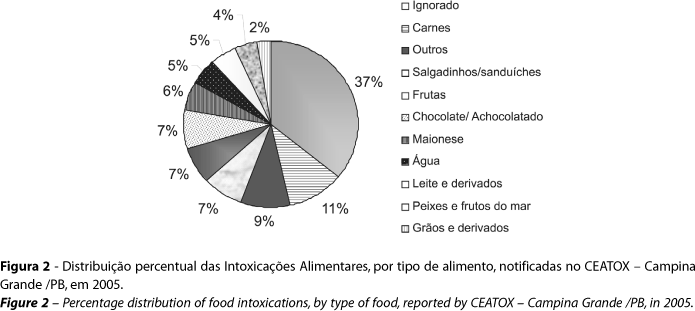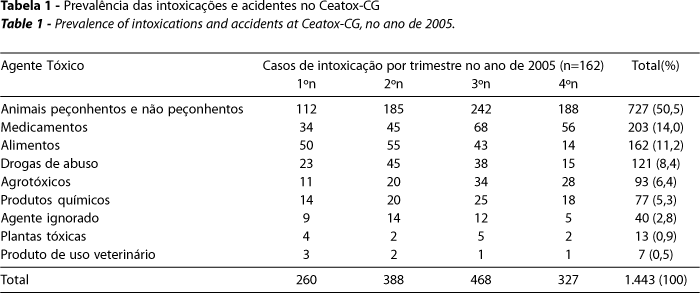OBJECTIVES: This work aimed to identify socio-demographic aspects related to food intoxications reported by the Poisoning Information Center of Campina Grande (CEATOX - CG), PB, in 2005. METHODS: Retrospective study with a quantitative approach. Data were collected from the Sinitox (National of Toxic-Pharmacologic Information System) Reporting Forms. Features collected were: gender, age, residence zone of patient, period of the year, occupation, schooling, intoxicating food, and outcome (cure/death). RESULTS: Of the 1,443 intoxications and accidents with toxic plants and poisonous animals reported during the year of 2005, 162 were food intoxications. We observed that females were the most frequently intoxi-cated, with 56.2%. The 20-29 year-old-group was the most prevalent, and a great part of patients lived in the urban area, accounting for 95.7% (155) of all food intoxications (162). According to schooling and occupation, 59.9% and 44.4% of the cases, respectively, could not be identified. The most prevalent food in intoxications was meat (11.0%). No death was reported during the study period. CONCLUSION: Food intoxications registered at the Ceatox-CG account for 11.2% of the cases seen and reported in this Center, ranking third in relation to other toxic agents. Although the reporting system used by the Center has a large volume of information, it is not filled out properly, and, therefore, important aspects for the final analysis of data are missing.
Intoxication; Food; Reporting



